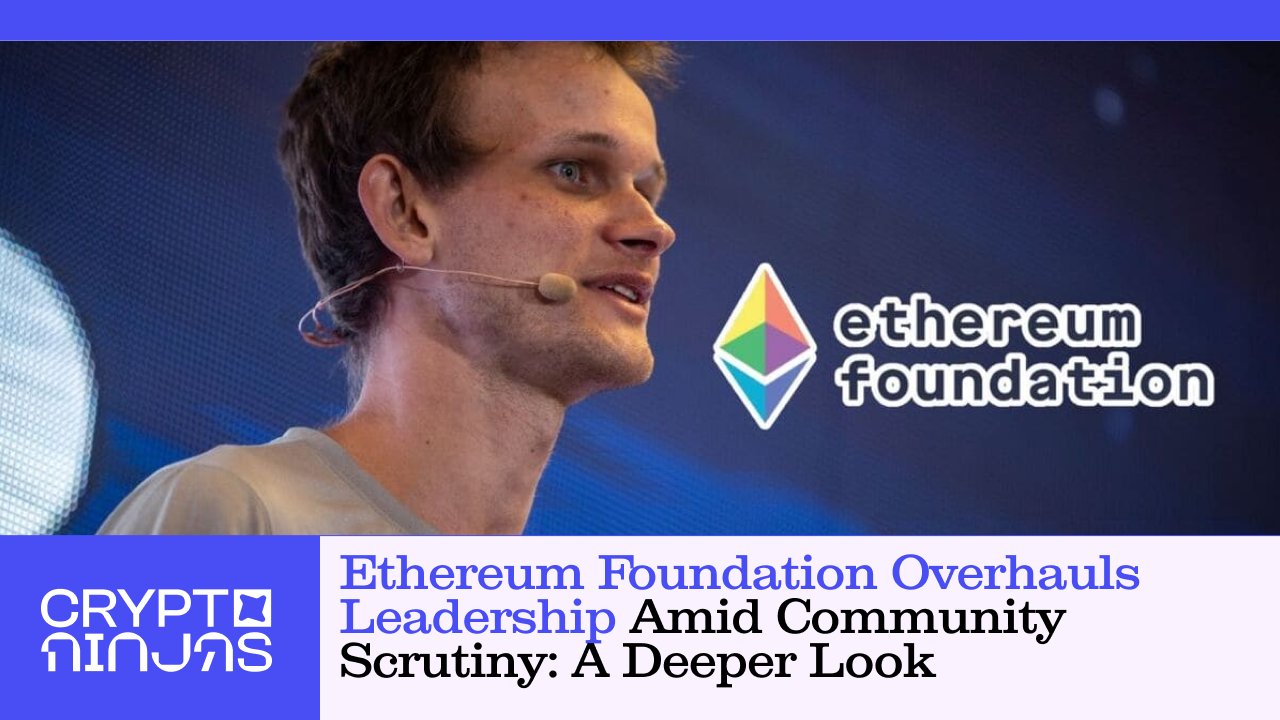The Ethereum Foundation’s New Treasury Policy: A Strategic Shift Toward Transparency and Resilience

On June 6, 2025, the Ethereum Foundation (EF) unveiled a sweeping new treasury policy via its official account on X (formerly Twitter), marking a significant milestone in the evolution of Ethereum’s institutional governance. Accompanied by a striking visual of a crystalline Ethereum utopia, the announcement sparked widespread discussion within the crypto community.
This policy overhaul represents more than just a financial strategy—it’s a philosophical realignment that aims to reconcile Ethereum’s decentralized roots with the realities of managing a multi-billion-dollar treasury. With over 1.2 million ETH in reserve—worth roughly $4.5 billion in today’s market—the EF’s decisions have profound implications for price stability, network development, and community trust.
In this article, we shall delve into the policy’s background, core components, projected impact, potential pitfalls, and its broader significance within the crypto ecosystem.
The Historical Context
For years, the Ethereum Foundation has operated as one of the most influential yet enigmatic entities in the crypto space. While Ethereum itself is a decentralized protocol maintained by thousands of developers worldwide, the EF has served as a central steward—funding core infrastructure, grants, and community initiatives.
Despite its pivotal role, the EF has long faced criticism over the opaque management of its treasury. Previous ETH sales, often executed without warning, triggered market volatility and accusations of market manipulation. One of the most controversial instances occurred in January 2025, when the EF sold $670,000 worth of ETH during a market dip, leading to a 3% decline in ETH’s price. Community members voiced outrage, calling for greater accountability and transparency.
These concerns were further amplified by comparisons to other blockchain foundations like Avalanche and Polkadot, which had implemented structured financial frameworks and transparent operational strategies. In contrast, the EF’s approach appeared reactive and unsystematic, often at odds with the ethos of open governance that underpins Ethereum’s success.
Core Elements of the New Treasury Policy
In response to growing scrutiny and evolving financial norms within the industry, the EF’s new treasury policy introduces several transformative components:
1. Countercyclical Spending Strategy
A key highlight is the adoption of a dynamic spending model designed to align with market conditions. The EF plans to:
- Increase spending during bear markets, when ecosystem funding typically dries up.
- Conserve capital during bull markets, when external capital inflows are abundant.
This countercyclical approach ensures continued investment in critical infrastructure during downturns—supporting developers, security audits, and protocol upgrades when they are most needed. The EF has committed to spending up to 15% of its treasury annually, maintaining a 2.5-year operational runway to withstand prolonged bear markets.
By stabilizing its financial footprint, the EF hopes to mitigate the cyclical funding crunch that has plagued Ethereum-based projects in past bear markets.
2. Active Asset Management
The new policy also signals a shift from passive ETH holding to active capital deployment. Instead of allowing ETH to sit idle in wallets, the EF will now:
- Stake ETH to earn annual yields (currently averaging 3–5%) via Ethereum’s proof-of-stake consensus.
- Deploy assets into vetted DeFi protocols to earn higher, risk-adjusted yields.
This move aligns with the EF’s desire to embrace Ethereum-native infrastructure. Protocols under consideration will be evaluated for security, liquidity, de-pegging risks, and governance integrity. This dual approach—staking and DeFi yield farming—reflects both a belief in Ethereum’s potential and a pragmatic desire to maximize returns responsibly.
While staking has become mainstream since Ethereum’s Merge in 2022, the Foundation’s participation in permissionless DeFi protocols represents a bold step. It validates the utility of decentralized finance while creating a potential benchmark for institutional best practices.
3. Real-World Asset (RWA) Integration and Fiat Diversification
In addition to managing crypto-native assets, the EF intends to explore the tokenization of real-world assets (RWAs), such as U.S. Treasuries, corporate bonds, or stablecoin-backed instruments. These will be used to stabilize fiat reserves and provide low-risk yield opportunities.
As DeFi continues to absorb elements of traditional finance, this move illustrates the EF’s intent to stay ahead of the curve—integrating novel tools without compromising on decentralization principles.
4. Transparency and Community Engagement
One of the most welcome changes is a commitment to regular public disclosures. The EF will publish:
- Quarterly and annual reports on treasury performance, allocations, and sales.
- Open channels for community feedback, aligning with Ethereum’s cultural emphasis on openness and collaboration.
Strategic Implications: What This Means for Ethereum
1. Market Stability
Structured and transparent asset sales could help reduce price volatility that previously stemmed from unexpected liquidations. By anchoring its spending model to a clearly defined runway and providing advance disclosures, the EF aims to signal confidence and reduce the market impact of treasury movements.
However, the treasury’s composition—still over 80% in ETH—remains a potential vulnerability. In extreme downturns, if non-ETH assets and DeFi yields fail to bridge funding gaps, the Foundation may still be forced to sell ETH, possibly putting pressure on the market.
2. Ecosystem Support and Builder Confidence
The increase in funding during downturns could be a game-changer for developers and smaller projects. Many innovative teams have historically struggled with sustainability during crypto winters. With greater backing from the EF, essential services like client development, protocol upgrades, and educational initiatives may see consistent support regardless of market conditions.
Additionally, by actively engaging with DeFi protocols, the EF indirectly contributes to the growth and legitimacy of Ethereum-native financial infrastructure. This may foster more adoption of DeFi by other institutional players.
3. Strengthened Decentralization Narrative
Through its support of permissionless protocols and open reporting, the EF reinforces Ethereum’s founding ethos of decentralization. By “eating its own dog food,” the Foundation sends a powerful signal: Ethereum isn’t just the network it builds, but the ecosystem it believes in.
Risks and Challenges: The Double-Edged Sword
While the policy introduces progressive elements, it also exposes the EF—and Ethereum more broadly—to new forms of risk.
1. Smart Contract Vulnerabilities
Yield farming, even when conducted via blue-chip protocols, exposes capital to a range of risks, including:
- Reentrancy attacks
- Oracle manipulation
- Governance takeovers
- Access control failures
According to OWASP’s 2025 Smart Contract Top 10 report, DeFi lost over $1.42 billion to exploits in 2024 alone. Even cautious participation cannot eliminate these systemic risks entirely. A high-profile exploit involving EF-managed funds could have both financial and reputational fallout.
2. Market Perception and Regulatory Scrutiny
Large on-chain movements from the EF could still be misinterpreted as market manipulation, especially if tied to coordinated rebalancing or sudden liquidity exits. Furthermore, as the EF engages more directly with DeFi and tokenized RWAs, it could attract the attention of regulators who are increasingly targeting hybrid financial structures.
3. Execution and Accountability
The EF’s ability to meet its transparency goals will be under constant public scrutiny. Missed disclosures, vague reports, or perceived delays could reignite community skepticism. In the high-stakes world of crypto governance, perception often carries as much weight as performance.
Broader Ecosystem Context
This policy revamp doesn’t exist in isolation. It reflects the Ethereum Foundation’s response to a rapidly evolving crypto landscape:
- Decentralized Finance is no longer experimental—it’s foundational. With Ethereum hosting over 50% of all DeFi total value locked (TVL) according to DeFiLlama, the EF’s involvement lends credence to Ethereum’s financial ecosystem.
- Competitor chains like Solana, Avalanche, and Cosmos have adopted structured treasury strategies that include community governance and institutional-grade investment tactics. The EF's pivot can be seen as both a necessary catch-up and a strategic elevation.
- Regulatory uncertainty, leadership transitions, and increasing capital requirements make it imperative for foundational entities to adopt more robust financial frameworks.
Looking Ahead: Metrics That Matter
As this ambitious policy rolls out, a few key indicators will help determine its success:
- Granularity of Treasury Disclosures: Will the EF share specific metrics on staking rewards, DeFi yields, and RWA positions?
- Security Track Record: Can the EF manage yield strategies without falling prey to DeFi exploits?
- Community Feedback Integration: Will stakeholder input meaningfully shape policy, or will it remain symbolic?
Ultimately, the community will measure success not by intent, but by consistent, transparent execution.
Conclusion
The Ethereum Foundation’s new treasury policy is a calculated and timely evolution. It acknowledges past shortcomings, embraces Ethereum-native innovations, and lays a structured financial foundation for the years ahead. If executed with discipline and transparency, it could set a new standard for crypto governance—where financial resilience complements decentralized ideals.
References














Comments ()